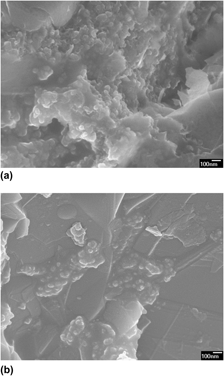Article contents
Effects of resin type on properties of graphite/polymer composite bipolar plate for proton exchange membrane fuel cell
Published online by Cambridge University Press: 25 November 2011
Abstract

The bipolar plate is one of the most important components in proton exchange membrane fuel cell. In this article, the graphite/polymer composite bipolar plates have been developed by compression molding technique. The study on effects of different resin types on the electrical conductivity, mechanical property, and corrosion performance of the composite bipolar plates shows that the properties of graphite/novolac epoxy (NE) plate are all better than those of graphite/phenol formaldehyde resin plate. The triple continuous structure provides graphite polymer blends with high electrical conductivity, high flexural strength, less porosity, and high density. Most of the properties, such as electrical conductivity, flexural strength, water adsorption, porosity, and so on, are affected by the properties of the polymer. The graphite/NE composite bipolar plate when used in the unit fuel cell assembly showed single-cell performance comparable to that of the commercially available graphite bipolar plates.
- Type
- Articles
- Information
- Copyright
- Copyright © Materials Research Society 2011
References
REFERENCES
- 8
- Cited by




